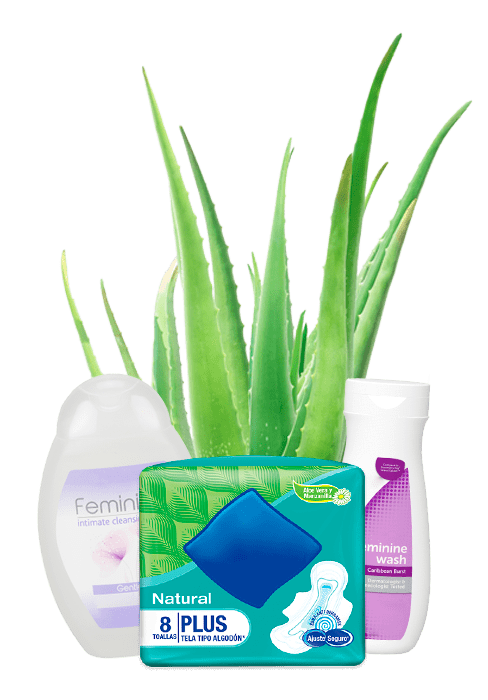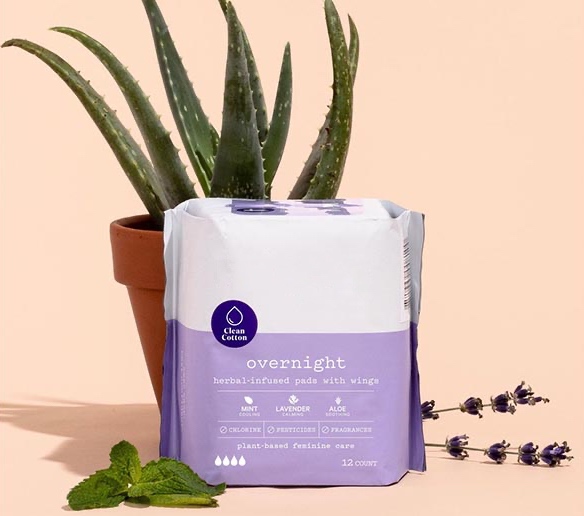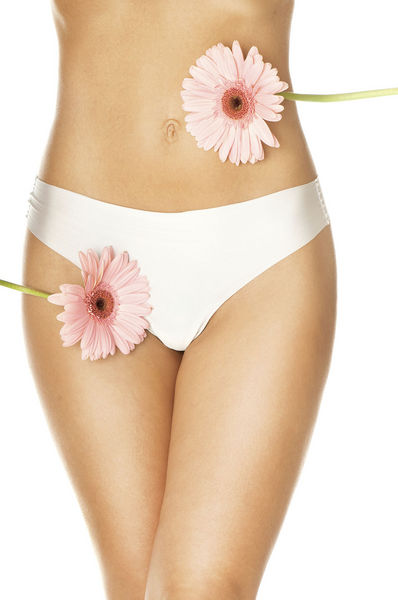Feminine Hygiene
Aloe Vera in Feminine care products.
Packed with beneficial nutrients, Aloe is a key for a variety of skincare applications. The soothing properties of Aloe are incredibly helpful during the cleansing process of the skin’s areas. Externally applied, Aloe is a natural ingredient with the ability to penetrate the skin and transport healthy substances through it.
Aloe Vera provides a wealth of advantages ranging from softness, elasticity, and absorption.
Packed with beneficial nutrients, Aloe is vital for a variety of feminine non-woven applications. The multiple properties of Aloe are helpful during the use of feminine hygiene pads. Fortunately, Aloe can avoid irritation and odor, thus decreasing the amount and length of time of discomfort. It should be applied generously to the top sheet of non-woven articles with contact and friction with the product.
Aloe Vera penetrates the skin quickly and profoundly, allowing water and other moisturizers to sink deeply into the skin, restoring lost fluids and replacing the fatty layer. It permits the uronic acids, which strip toxic materials of their harmful effects, penetrate deeply, and allow the gel’s cleansing astringent qualities to work better. By increasing the circulation of the blood to an area, Aloe Vera sloughs off the dead cells and fosters new ones’ growth. This helps stimulate the regeneration of scarred or blemished skin tissue and provides a protective coating on the skin to prevent harmful bacteria’s development.

Aloe Vera plant has the ability to carry nutrients and moisture through the different layers of the skin so it can benefit from a high absorption. Furthermore, the polysaccharides will create a barrier that prevents the loss of moisture. These polysaccharides also have antihistamine and antibiotic properties; people with damaged or easily-irritated skin are benefited. Finally, the enhanced availability of fibroblasts supports the natural collagen production process. Most global markets are increasingly concerned with consumer health and the use of natural products. Aloe Vera should regain its position as a valuable active ingredient; now, we can better understand the plant and know to look for the active compounds.
In the feminine hygiene category, products are becoming more technologically advanced with added cosmetic and convenience features to ease everyday use. New products are now more discreet or even invisible, giving women a secure feeling and preventing leakage. The broad variation of products available includes everything from mini tampons and panty-liners to thin and thick sanitary pads, all products in which non-wovens play a significant role in providing the desired properties and functions.
Changing lifestyles set the pace for new product development in this category, with recent trends including white or black panty-liners to match lingerie, full-size thick sanitary towels for the mature woman, and fully absorbent string pads for the younger generation. Some products are treated with Aloe Vera, either shaped or straight, and sometimes with soft non-woven wings for comfortable use. Convert Aloe Vera into a waterless lubricant solution, and apply the solution of Aloe Vera to areas in contact with skin. Aloe Vera provides a wealth of advantages ranging from softness, elasticity, and absorption for your feminine hygiene products; add value for this increasing market with this natural ingredient, bringing a differentiation concept in benefit of your line of absorbent garment for feminine care- sanitary napkins, panty liners become a leader in the market adding natural extract into your products.

Aloe Vera reduces the detrimental irritation and rash often associated with prolonged exposure, particularly areas of discharge of menstruation leakage. Be aware of the modern woman’s changing needs, creating the best response to these needs, developing a range of feminine hygiene products with extra care product features, as Aloe Vera does for your products.
Maximize softness with Aloe Vera.
One of the additives suggested for Personal Care products is Aloe Vera enriched with Vitamin E; as is well known that there is an inverse relationship between the softness of tissue paper products and the strength of those products. Strength is the product’s ability and its constituent webs to maintain physical integrity and resist tearing, bursting, and shredding under use conditions. Tissue paper is usually moderated in strength to the minimum level required to maximize the potential for softness.

The cleansing activity of Aloe Vera
Aloe Vera contains saponins; these are natural antifungal agents that inhibit the growth of bacteria, viruses, and fungi. They increase the concentration of antibodies in the blood, lower cholesterol, and normalize blood sugar concentration. Saponins also increase mineral absorption helping the neutralization process of acidic waste, improving digestion, and achieving overall wellness substances – sparkling microorganisms – with anti-inflammatory, antiseptic, and cleansing properties. An intense antimicrobial activity against bacteria, viruses, fungi, and yeasts while stimulating the immune system.
Aloe Steroid saponins, which resemble those of the human body and have anti-inflammatory action, saponins demonstrate antimicrobial properties, particularly against fungi and additionally against bacteria and protozoa. The antifungal and antibacterial properties of saponins are essential in personal care applications, in addition to their emollient effects. Because of their surfactant properties, saponins are also used in liquid bath soap in emulsions for cosmetic products like lipstick and shampoo, where their antifungal and antibacterial properties are essential in addition to their emollient effects.
The soapy characteristics of saponins make them ideal for spray adjuvants (they make sprays work better). They also make sprays stick or spread better on leaf surfaces. Saponins allow nutrients to be absorbed better. Another important thing they do is to distribute water more evenly on hard-to-wet substrates.
Aloe and antiseptic agents
The Aloe Vera, a plant produces six antiseptic agents: Lupeol, a natural salicylic acid, urea nitrogen, cinnamic acid, phenol, and sulfur all demonstrate antimicrobial effects. Lupeol and salicylic acid also have analgesic effects. These naturally occurring sterols bear a remarkable similarity to synthetic materials, those synthetic materials like corticosterone and hydrocortisone, traditionally used in allopathic medicine for their anti-inflammatory effects. The antiseptic property of Aloe Vera is due to the presence of six antiseptic agents, namely lupeol, salicylic acid, urea nitrogen, cinnamonic acid, phenols, and sulfur.
These compounds have an inhibitory action on fungi, bacteria, and viruses. Lauric acid is a potent antibacterial and antifungal agent. The human body converts lauric acid into monolaurin, which is supposedly helpful in dealing with viruses and bacteria.

For more information about Feminine Hygiene Mask download our free e-book

